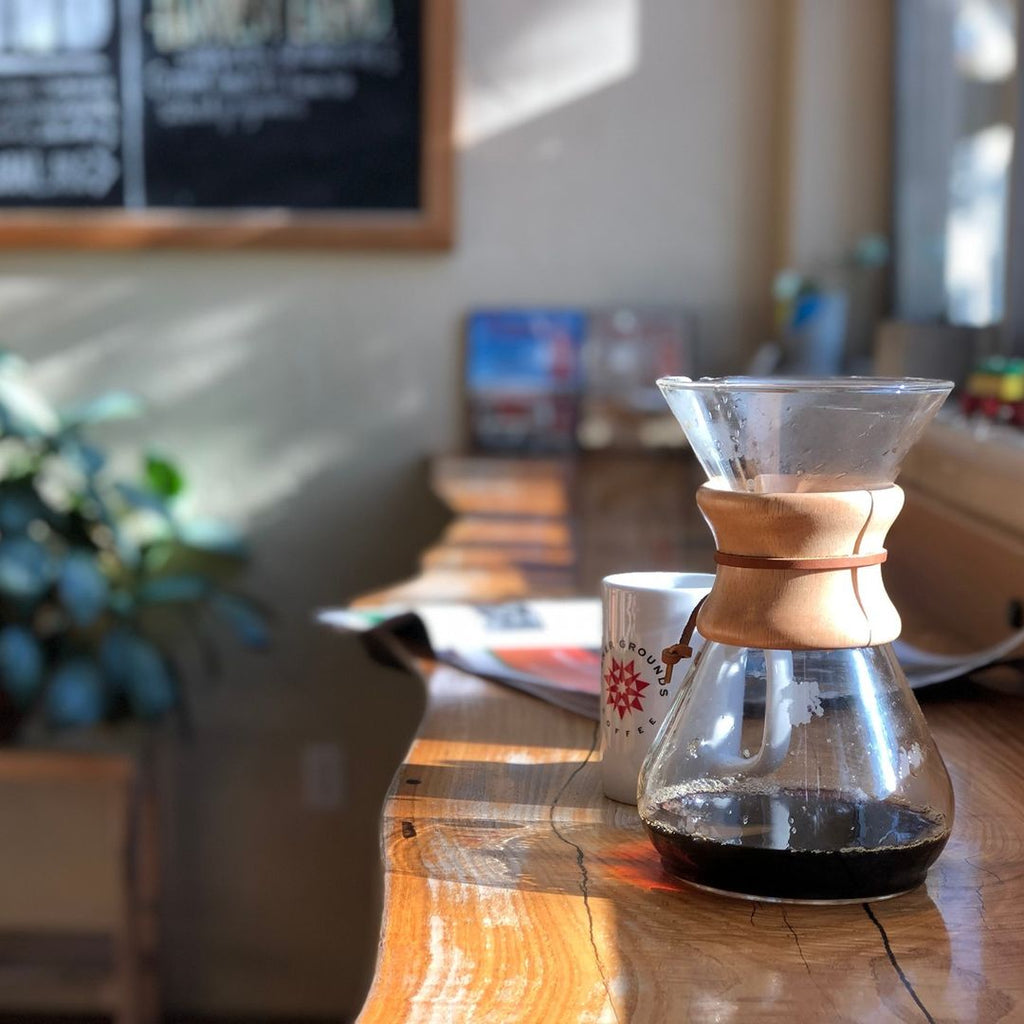
At any good restaurant, so much work goes into delivering diners the best possible flavors on each plate. Arguably, the coffee a restaurant serves should be treated with the same level of care – but this isn’t always the case.
For restaurants, coffee can be an opportunity to diversify and meet growing consumer demand. More than 50% of Americans over the age of 18 drink coffee every single day, and the specialty coffee market is currently valued at approximately $35 billion.
However, no two restaurants are the same. This means that thinking long and hard about the beans you offer is important. Look at the food you serve, think about your customer profile, and make sure you choose wisely. To learn more, I spoke to Chad Hall at Red Spire Brunch House in Traverse City, Michigan. Read on to find out what he said.

Why change the coffee you serve?
Traditionally, coffee has had a very specific role on the restaurant menu. It’s often served with breakfast, after the meal, or alongside dessert. But despite this, if you’re building a reputation for quality at your restaurant, all of your ingredients should be sourced and served with care – including your coffee.
In recent years, restaurants have shifted to using higher-quality ingredients, from premium cuts of meat to organic vegetables and artisanal breads. Why not serve a specialty coffee that matches that? Consumers are becoming more and more interested in the provenance and quality of the products they consume, and coffee is no exception.
Coffee can be used as more than a beverage, too. Many dishes use it as an ingredient or as a flavoring. Tiramisu and affogato are two popular coffee-based desserts, for example.

Selecting a coffee
Chad Hall is the co-owner at Red Spire Brunch House in Michigan. He suggests that before selecting a coffee, restaurant owners should think about what their brand is known for, and the kind of food they serve.
He asks: “How many types of coffee will you offer? What kind of space do you have available? Do you have adequate access to water and electricity? Most importantly, what flavor profile will your customers enjoy?”
When it comes to choosing a coffee, you could decide to contrast or mirror the coffee with your food offerings.
For instance, a good flavor pairing could be created by pairing a lighter roast with bright acidity, such as our Organic DR Congo Muungano, with a sweet, light dessert, like lemon sorbet or lemon drizzle cake. This can help you accentuate or highlight the best qualities of the food.
On the other hand, by contrasting your dishes, you can encourage customers to think about what they’re tasting in the cup against the food they’re eating. For instance, the floral, caramel flavors of our Organic Guatemalan San Marcos could be the perfect contrast to a traditionally heavy dessert – “cutting through” the rich, dense mouthfeel of a chocolate cake, for instance.
Chad says that at Red Spire, they wanted to be consistent with their coffee offering, so they opted for a medium roast blend from our roasting team at Higher Grounds.
He says: "It has an all-round good flavor and customers like it. Since we have a sweet tooth, the coffee has notes of chocolate and caramel that add to many of our dishes. We tend to let the coffee complement the dishes instead of being the overall star, but if you pick a good roast, it will shine on its own.”

Space and equipment
Of course, top-quality coffee requires professional equipment and a dedicated space to prepare it. If you want to serve espresso-based drinks like lattes and cappuccinos, you’ll need to invest in an espresso machine and a consistent, reliable coffee grinder.
Keep in mind that as a restaurant, you won’t necessarily be pulling shot after shot of espresso. Therefore, you might benefit from using a smaller, one-grouphead machine. This will allow you to focus on quality over quantity.
This will be suitable for restaurants that serve coffee as and when it’s requested. However if coffee is incorporated into your menu (such as with a popular tiramisu dish) you might need a bigger machine that can keep up with the increased demand.
In Red Spire’s case, Chad says that they have limitations on space and electricity, so they choose to offer regular and decaf drip coffee.
“We settled on using a drip machine with a gourmet filter/basket and a separate grinder. We purchase whole beans and grind to order to maximize freshness,” he adds.

How many coffees should you offer?
It’s important to focus on quality over quantity, and not to overstretch yourself by offering too many coffees. If you buy too many and have open bags of coffee sitting around for weeks, you’ll end up compromising the freshness and serving customers stale brews.
Start by selecting one or two coffees and then add more depending on your capacity and customer demand. Keep in mind that the more coffees you have on your menu, the more knowledge staff will need to bring out the best flavors in each.
It’s also vital to teach your staff how to make great-tasting coffee. Whether brewing drip or pulling espresso shots, train your staff to ensure they are knowledgeable about the coffee they are serving. This will help you maximize quality.

Selecting a coffee to complement your dishes or desserts might not be the first thing you think about when opening a restaurant. However, it represents an opportunity to provide more value to your customers and enhance their overall experience.
For many restaurants, it’s no longer a case of whether specialty coffee should be on the menu or not. Now more than ever, customers demand exceptional coffee alongside delicious food. In the end, it’s all about quality – and that means no detail should be overlooked.
